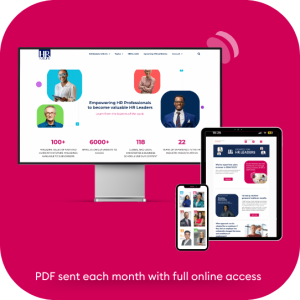Managing property is a high-stakes balancing act of juggling tenant relationships, building maintenance, compliance, and that ever-ticking clock of profitability. Add a sprinkle of HR into the mix, and it’s a recipe for chaos. That is unless, of course, you’re equipped with the right tools. Enter PropTech, the new superhero of property management, saving the day with tech-savvy solutions that make life easier, smoother, and occasionally – dare we say – perhaps even enjoyable.
The Intersection of Bricks, Mortar, and Morale
Property management is no longer just about bricks and mortar. It’s about people – whether those people are tenants, landlords, or the property management team. Still, managing the human side of property operations can feel like herding cats, especially in a labor-intensive industry like this one. PropTech offers up a way to streamline not just the operational side of things, but the human element, too, giving your HR processes a turbo boost while cutting out the inefficiencies.
But what does this all look like in practice?
1. Applicant Tracking Systems (ATS)
Recruiting property management staff used to involve paper resumes, piles of emails, and a lot of praying that the right candidate could be found somewhere in that stack. Now, ATS tools – like BambooHR or Workable – act like your personal talent scout, filtering applications, automating follow-ups, and even conducting initial screenings.
No more playing hide-and-seek with resumes in your inbox. These systems also integrate with job boards and social media platforms to cast a wider net; efficient, effective, and guaranteed to land a catch.
2. Onboarding Platforms
There’s nothing like a clunky onboarding process to make new hires question the validity of an opportunity; a poorly managed first week can sour even the most enthusiastic recruit. Onboarding platforms – like Gusto or Sapling – streamline the process, ensuring that everything from paperwork to training schedules is handled without a hitch.
3. Employee Training and Development
Let’s face it, no one likes mandatory training that feels akin to watching paint dry. Fortunately, learning management systems (LMS) like Lessonly or TalentLMS are shaking things up. These platforms allow property management companies to deliver engaging, interactive training that keeps employees sharp.
From conflict resolution to lease law updates, training doesn’t have to be a drag. And the best part? LMS tools often track progress, so you’ll know exactly who’s aced their courses – and who’s still cramming like a college freshman.
4. Scheduling Software
Property management teams are often on the go, whether it’s meeting tenants, inspecting properties, or responding to emergencies. Keeping track of who’s where can feel like managing air traffic control (minus the cool headsets). Scheduling software – like Deputy or When I Work – can bring order to the chaos of coordination.
For small landlords juggling fewer properties, however, the solution might be even simpler. Using property management software for small landlords can combine scheduling, tenant communications, and maintenance tracking in one place, streamlining operations without the need for multiple tools. The result? Fewer missed appointments and more time to focus on growth – and simply catching your breath.
5. Performance Management Systems
How do you know if your team is hitting the mark? Performance management systems, such as Lattice or Performance Pro, offer up a bird’s-eye view of employee achievements, challenges, and areas for growth; these platforms track key performance indicators (KPIs) and set benchmarks, ensuring everyone is aligned with company goals.
6. Employee Feedback Platforms
A happy team is a productive team, yet many companies don’t know what their employees really think until it’s too late. Feedback platforms like 15Five or Officevibe create a safe space for employees to voice their thoughts.
These tools allow property managers to keep a finger on the pulse of their team’s morale, offering actionable insights and opportunities for improvement.
7. HR Analytics Tools
In the age of information, guessing is a luxury no one can afford. HR analytics tools, like ChartHop or Visier, dig (unfathomably) deep into data, uncovering trends and patterns that can help property management teams make informed decisions.
Why is your turnover rate higher in one region? What’s the ROI of your training programs? HR analytics don’t just give you the numbers – they give you the ‘why’ behind them.
8. Communication Platforms
If your team is scattered across multiple properties, communication can be a nightmare. Enter tools like Slack or Microsoft Teams, which turn chaotic email threads into streamlined channels for collaboration and keeping everyone in the loop.
Whether it’s sharing tenant updates, discussing maintenance issues, or just planning Friday drinks, these platforms ensure that everyone is on the same page – or at least the same app.
9. Employee Wellness Programs
Burnout is real, and property management is no stranger to it. Wellness platforms, such as Calm for Business or Virgin Pulse, bring a breath of fresh air to HR strategies. Offering access to resources for mental health, fitness, and overall wellbeing can make a world of difference.
10. Payroll and Benefits Management
Let’s not forget the bread and butter of HR: payroll and benefits. Tools like Rippling or Zenefits handle the nitty-gritty, ensuring that everyone gets paid correctly and on time. They can also manage perks like health insurance, retirement plans, and other employee benefits.
The Future of PropTech and HR Integration
The marriage of PropTech and HR tools is more than a passing trend – it’s an extraordinary game-changer. These technologies don’t just automate tasks; they empower property management teams to focus on what really matters: creating value for tenants, landlords, and employees alike.
The Foundation of a Thriving Modern Operation
In the world of property management, the stakes are high, and the margins are thin. Integrating PropTech with HR isn’t just a smart move – it’s an essential one. Whether you’re recruiting top talent, managing schedules, or keeping your team motivated, these tools are the foundation of a thriving operation.
Guest writer


























